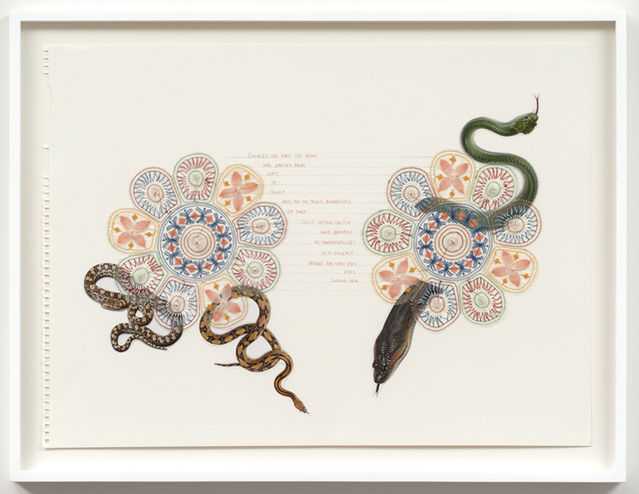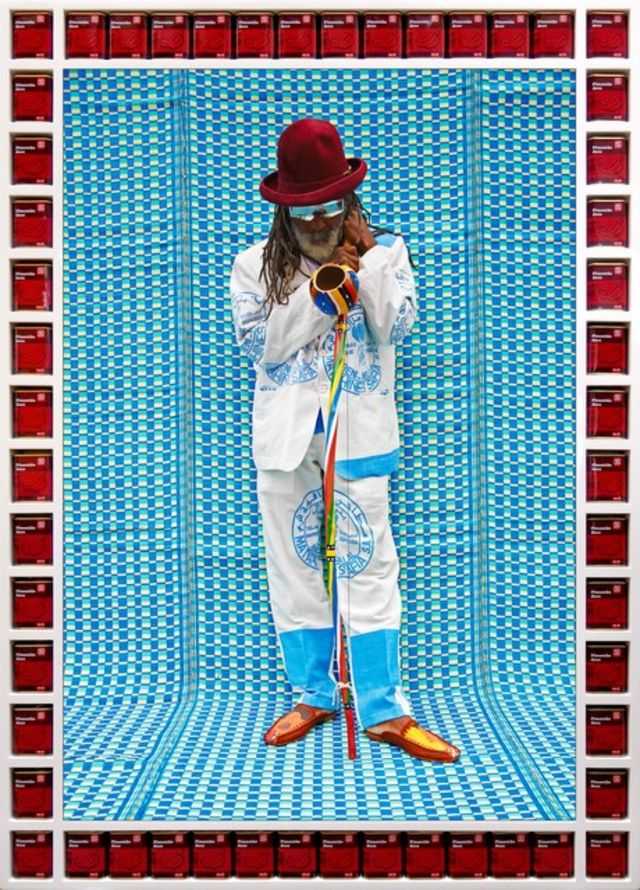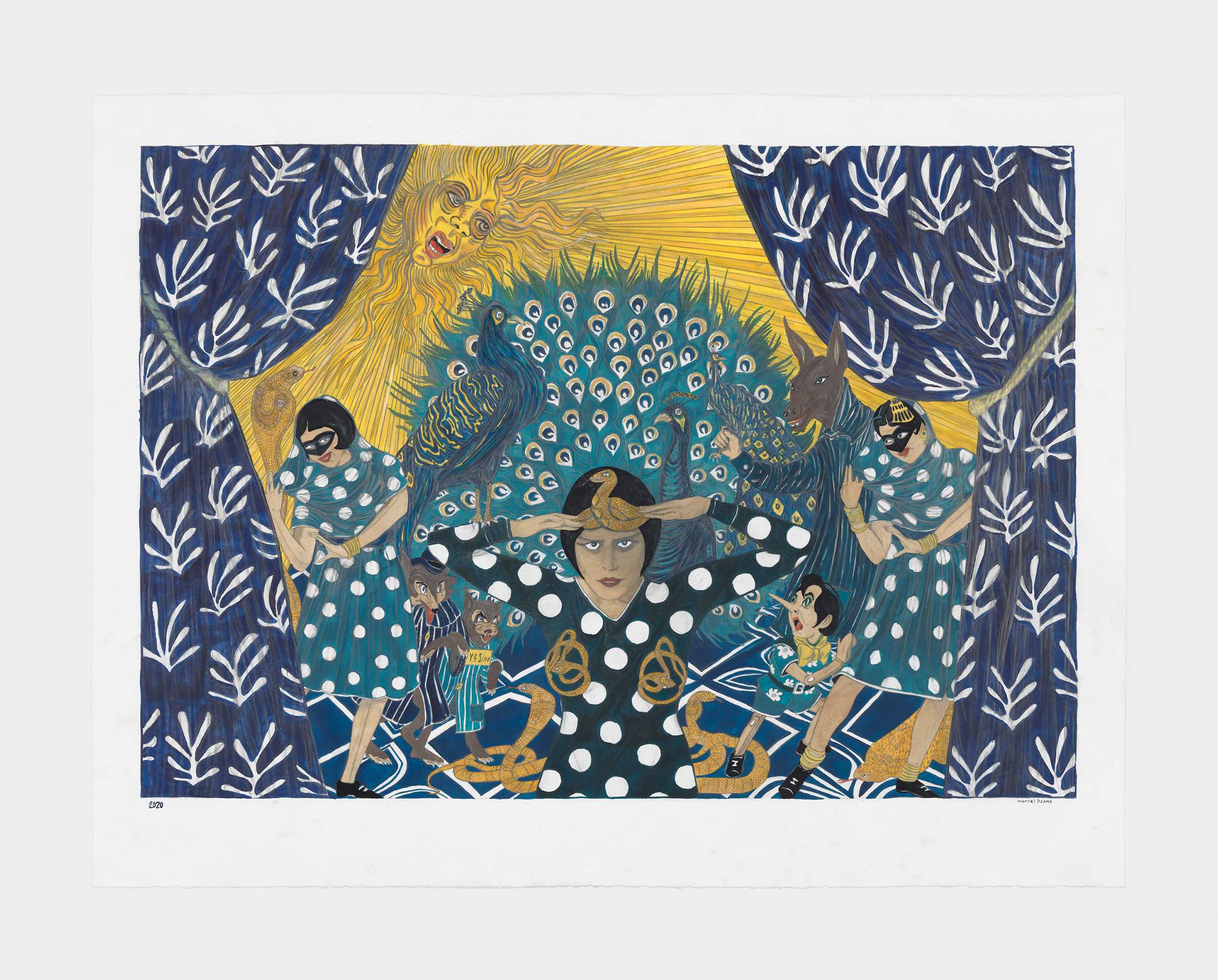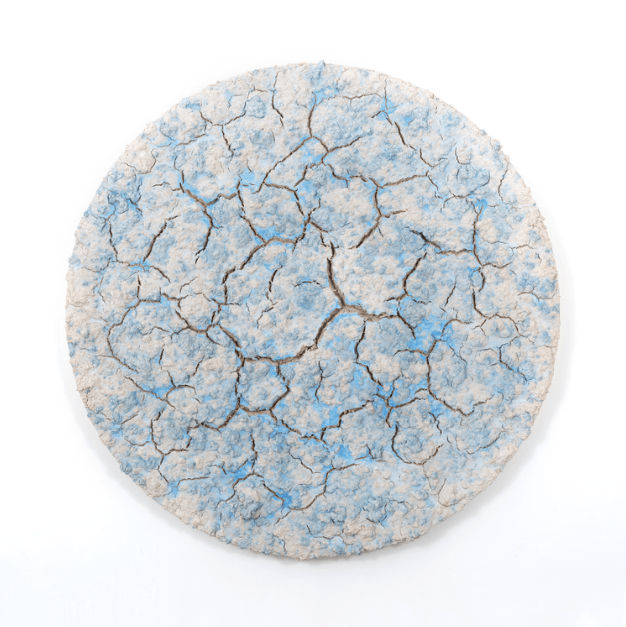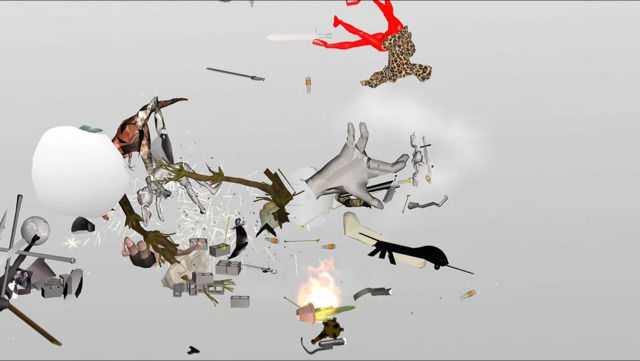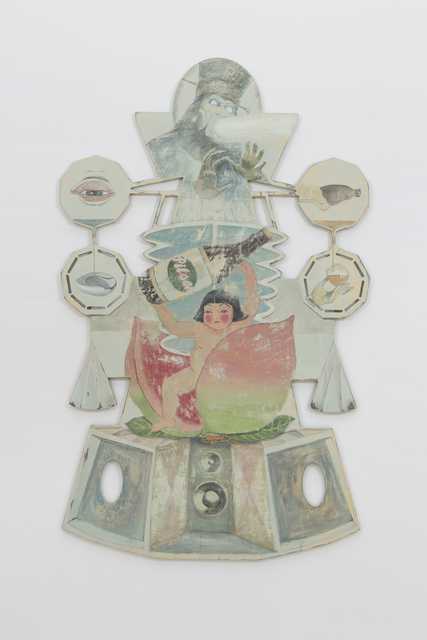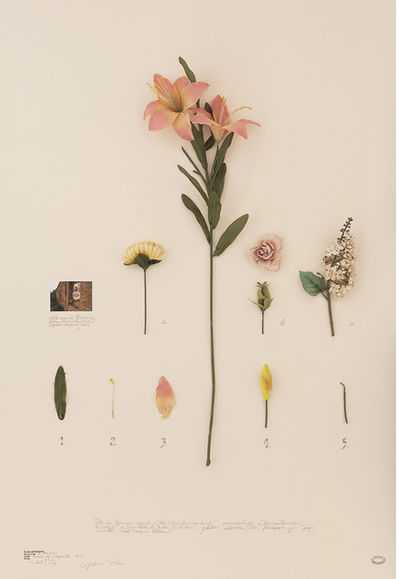Art Basel Miami 2020 was only virtual this year, but it still showcased the best in art and design even if we couldn't see everything in person. Below are some of my top picks from this year's Art Basel Miami show:
Master Cobra Mansa, 2012, Hassan Hajjaj
Hassan Hajjaj is a Moroccan artist, photographer, designer, and filmmaker. His artwork is heavily influenced by the hip hop and reggae scenes in London, along with his North African heritage. More recently, his works draw inspiration from "rock stars" all around the world. Completely self-taught, Hajjaj's diverse portfolio makes him a stand out at this year's Art Miami 2020.
The sun arises in the east, 2019, Marcel Dzama
With influences from surrealist film, Dadaism, and Soviet-era agitprop- Marcel Dzama creates stunning small ink and watercolor drawings. His work features hybrid figures, such as trees with limbs or humans with animal features. The use of storytelling has made his work very distinct- and you can find his pieces on the covers of many musical bands' albums.
Moon gazer and Lemon Trees, 2020, Jannis Varelas
Jannis Varelas is a Greek artist who focuses on the surprisingly dull elements of everyday life. His work is constructed of fragments of reality, things that may seem minuscule or unremarkable. The symbols used in Varelas' pieces are almost childlike, yet still remain dynamic and bold. He brings narratives of social issues into colorful and sometimes irrational works of art.
Cerebral Calibration, 2017, Lisa Corinne Davis
Abstract painter Lisa Corinne Davis creates works of art that focus on social, racial, and psychological identity. She is a published author of 3 books and has work featured in critically acclaimed art museums around the US- including the Museum of Modern Art in New York and the J Paul Getty Museum. She currently works at the Hunter College in New York as the interim MFA Director and Head of Painting.
Sacred Vision 2 Video Games No. 3, 1990, Suzanne Treister
Originally starting her career as a painter, Treister's work explores structures of power and knowledge. After switching mediums in the late 1990s, she now works primarily with a variety of formats, including video, the internet, interactive technology, and more. As time goes on and technology evolves, Suzanne Treister frequently goes back and updates her work accordingly to reflect current times.
Untitled, 2020, Bosco Sodi
Bosco Sodi's work is highly regarded as pure bursts of color. He uses raw and natural materials such as sawdust and wood pulp to create layered, monochromatic works of art. Once the pieces dry, they crack and form beautiful textures reminiscent of natural surfaces such as lava and dried earth. Sodi uses natural dyes and pigments to create these rich colors. The work is typically large scale and created in one sitting.
Entropy Wrangler (Atik), 2013, Ian Cheng
The work of Ian Cheng explores complex themes of change through the principles of improvisation, video game design, and cognitive science. Cheng creates virtual simulations that explore the ability to change. The above piece is a video that features live simulation and sound to contextualize the idea of change and evolution.
Probe, 2020, Arturo Kameya
Inspired by the shapes and sounds of Lima's street systems and pyrotechnic castles, Arturo Kameya created this beautiful piece out of clay powder and wood. Featuring the fictional character Lo Pan, which was seen on the American comedy Big Trouble in Little China, this piece represents triumph against all odds.
Eyes Closing Now, 2020, Zoë Buckman
Zoë Buckman is an English artist who specializes in a variety of mediums such as sculpture, photography, and neon. Her work focuses on feminism, identity, and cultural norms in today's world. She typically mixes masculine and feminine themes to create well-rounded outlooks on the issues we are facing in society. Buckman's work is thought-provoking and upfront.
Pink Lillium of Gibellina, 2018, Alberto Baraya
A lover of irony and exploration, Alberto Baraya's work often features parody through photography, drawings, video, and found items. More recently, his work has focused on the work of 18th and 19th-century travelers that took plants and brought them to foreign countries in the name of colonization. The above piece features faux flowers that have been "collected" and cataloged.
Although it isn't the same as getting to see things in person, the virtual viewing rooms were a much-needed escape. Congrats to Art Basel Miami 2020 for making this show accessible from all over the world. We'll hopefully be back next year for the full experience.
